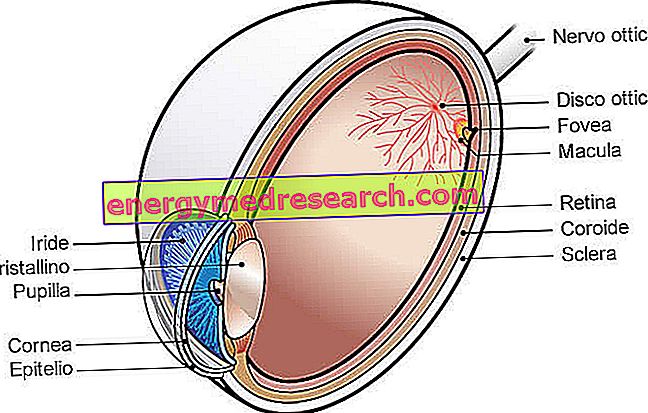Definition of thrombocytopenia
In the medical field, platelet suppression is defined as the occurrence of circulating platelets less than 150, 000 units per mm3 of blood, detected on a blood count carried out at least with two different anticoagulants. The thrombocytopenia therefore outlines a parameter indicative of blood coagulation capacity: in general, the quantity defined as "normal" (or physiological) of platelets in the blood is between 150, 000 and 400, 000 units per mm3.
The thrombocytopenia - also called thrombocytopenia (from thrombocytes = platelets) - is a rather worrying condition, since it represents the most common cause of hemorrhagic diathesis.
Step back… Platelets (or thrombocytes), together with red and white blood cells, are very important constituents of the blood: there is no mention of actual cells, rather of very small cytoplasmic fragments of circulating megakaryocytes within the bone marrow. Platelets play a role of primary importance: they are involved, in fact, in the complex regulation function of haemostasis: in other words, platelets intervene in the blood coagulation process. |
Symptoms
Generally speaking, spontaneous bleeding is rather difficult when the levels of thrombocytopenia in the blood are between 50, 000 and 150, 000 units per mm3: in similar situations, the bleeding can occur following surgery or trauma. On the other hand, when platelets fall between 20, 000 and 30, 000 thrombocytes per mm3, the risk of spontaneous bleeding is more likely: bleeding is ascertained and worrying when the thrombocytopenia falls below 10, 000 / mm3.
Thrombopenia, as can be guessed, is closely related to the platelet hemorrhagic syndrome, which can occur in different forms and entities, both on the basis of the subject and the blood platelet values: clearly, the more severe the thrombocytopenia, the more severe the symptomatic picture of the patient.
In the case of severe platelet suppression, bleeding can occur with ecchymoses (where there were traumas), epistaxis (nosebleeds), gastrointestinal and / or urinary bleeding and menorrhagia. In extreme cases, thrombocytopenia can cause cerebral haemorrhages.
However, it is important to reiterate that the symptoms related to thrombocytopenia are heavily linked to the platelet count: in most cases, the lack of platelets in the blood is diagnosed randomly, without the patient complaining of any symptoms (even at values below 20, 000 platelets / mm 3).
According to this, a question arises: why do some people complain of symptoms and others do not? The symptoms generated by the lack of thrombocytes are not only related to the absolute number of these, but also to their functional capacity: moreover, many other factors must be taken into account, such as concomitant diseases, presence / absence of coagulation elements, alterations of the blood vessels, triggering cause, etc.
Clearly, former leukemia patients are more at risk not only of thrombocytopenia but also of severe symptoms starting from platelet values close to the norm: a similar speech is also valid for patients with bone marrow failure. As we shall see in the next paragraph, even the immoderate use of NSAIDs - by altering the correct platelet function - can be responsible for bleeding, more or less serious.
Causes
The etiological study of thrombocytopenia is quite articulated, since multiple and varied are the triggering causes; in addition to the countless etiological factors, it is worth highlighting that each organism reacts differently, also and above all on the basis of the patient's history and state of health.
First of all the platelet diseases linked to a marked reduction in the production of platelet precursors, the megakaryocytes: generally, this is correlated, in turn, to serious pathologies (carcinomas, leukemias, etc.), in which the diseased cells infiltrate the marrow bone.
Sometimes, even infectious diseases, rubella, mononucleosis, chicken pox and radiation can heavily affect blood platelet values.
A frequent cause of thrombocytopenia due to excessive consumption of platelets is represented by disseminated intravascular coagulation: we are talking about a serious pathology in which the abnormal activation of the coagulation cascade generates microthrombi. This form of thrombocytopenia can be aggravated by bacterial infections (eg salmonellosis).
Even the deficiency of vitamin B12 and B9 (folic acid) or rare syndromes (eg May-Hegglin anomaly), together with frequent infections, megaloblastic anemia and eczema can contribute to altering the blood platelet concentration, triggering various levels of thrombocytopenia.
Furthermore, the lack of thrombocytes in the blood can be linked to their destruction: powerful drugs, such as antibiotics and chemotherapy, as well as systemic diseases and serious infections can gradually or suddenly destroy platelets.
In other patients, the decrease in platelet values depends on thrombocyte sequestration, in which the spleen is generally responsible (typical thrombocytopenia due to liver cirrhosis).



